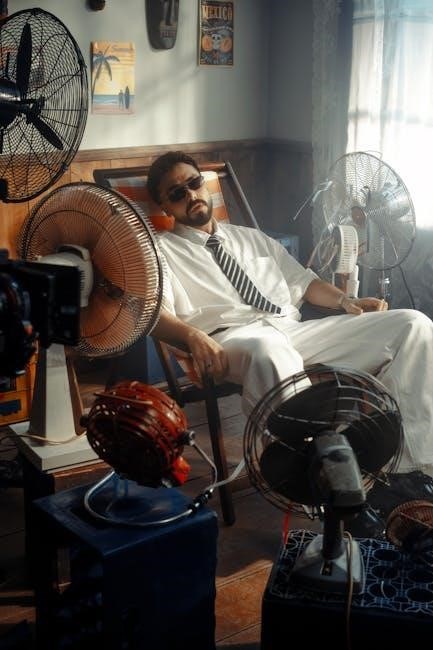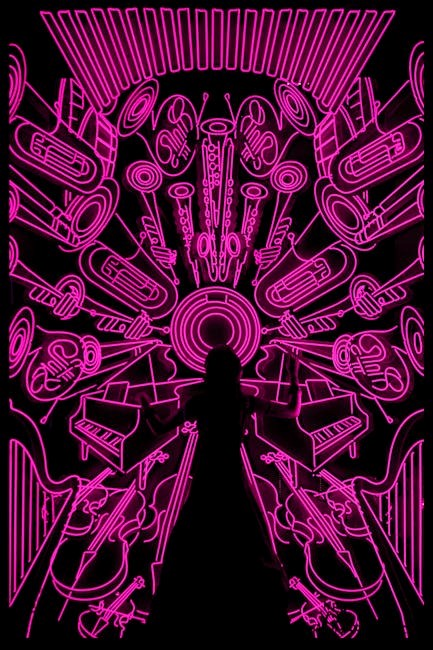Mia and Sebastian’s Theme is a beloved musical piece from the film La La Land, composed by Justin Hurwitz. Its emotional depth and melodic complexity make it a popular choice for pianists worldwide.
1.1. Background of the Song
Mia and Sebastian’s Theme, composed by Justin Hurwitz, is a central musical piece from the 2016 film La La Land. This piano-based theme captures the emotional essence of the story, reflecting the characters’ journey and relationship. Its melodic structure and harmonic richness have made it a standout piece, resonating with audiences and inspiring pianists to perform and interpret it worldwide.
1.2. Popularity and Cultural Impact
Mia and Sebastian’s Theme has achieved widespread acclaim, becoming a cultural phenomenon. Its piano arrangement is highly sought after by musicians and fans alike, with numerous covers and interpretations emerging globally. The theme’s emotional depth and melodic beauty have solidified its place in modern musical history, making it a timeless piece that continues to inspire and influence new generations of pianists and music enthusiasts.

Composer and Arrangements
Justin Hurwitz composed Mia and Sebastian’s Theme, with notable piano arrangements available, including intermediate-level solos and transposable versions for diverse musical interpretations.
2.1. Justin Hurwitz: The Composer
Justin Hurwitz is the acclaimed composer behind Mia and Sebastian’s Theme, crafting a timeless melody that resonates deeply. His work on La La Land earned widespread critical acclaim, solidifying his reputation as a master of contemporary film music. The piece’s emotional depth and complex structure reflect Hurwitz’s skillful blending of jazz and classical influences, making it a standout in modern cinema scores;
2.2. Notable Arrangements for Piano
Mia and Sebastian’s Theme has been beautifully arranged for solo piano by various artists, offering interpretations that range from simple melodies to intricate compositions. Notable arrangements include those by Yuliya Gurkova and SolKeys, which capture the piece’s emotional essence. These versions are available in interactive formats, allowing pianists to transpose and adjust tempos, making them accessible to both intermediate and advanced players.
Sheet Music Availability
Sheet music for Mia and Sebastian’s Theme is widely available in PDF, MIDI, and MP3 formats from sources like Virtual Sheet Music and other online communities;
3.1. Sources for Download
Sheet music for Mia and Sebastian’s Theme can be downloaded from various sources like Virtual Sheet Music, PianoKafe, and Hal Leonard. These platforms offer both free and paid versions, ensuring accessibility for all musicians. The sheet music is available in formats such as PDF, MIDI, and MP3, catering to different preferences and needs. Many sites provide interactive and transposable versions, making it easy for pianists to adapt the piece to their skill level.
3.2. Free vs. Paid Versions
Free versions of Mia and Sebastian’s Theme sheet music are widely available online, offering basic notation for personal use. Paid versions, however, provide high-quality, licensed sheets with enhanced features like interactivity and transposition. Platforms like Virtual Sheet Music and Hal Leonard offer both options, catering to different budgets and needs. Free versions are ideal for beginners, while paid versions suit serious pianists seeking professional arrangements and legal compliance.
3.3. Formats (PDF, MIDI, etc.)
The sheet music for Mia and Sebastian’s Theme is available in multiple formats, including PDF, MIDI, and mp3. PDF is the most popular choice for its clarity and printability, while MIDI files allow for digital manipulation and playback; Some platforms also offer interactive versions, enabling transposition and tempo adjustment. These formats cater to different preferences, ensuring accessibility for pianists of all levels and technical setups.

Structure of the Sheet Music
Mia and Sebastian’s Theme sheet music is structured for solo piano, spanning multiple pages. It includes detailed notation of melody, harmony, and rhythm, with dynamic sections and emotional depth.
4.1. Musical Notation and Layout
The sheet music for Mia and Sebastian’s Theme features clear and detailed musical notation, with chord symbols and dynamic markings. The layout is organized for solo piano, showcasing melody, harmony, and rhythm. The notation is structured to guide pianists through the piece’s emotional journey, with clear performance directions and pedaling guides for intermediate pianists.
4.2. Key and Tempo Information
Mia and Sebastian’s Theme is composed in the key of A Major, with a moderate tempo of 80 BPM. The sheet music specifies dynamic variations, transitioning from soft, delicate passages to powerful crescendos. The tempo remains steady, allowing pianists to emphasize the emotional depth of the melody. The arrangement also offers transposition options, making it accessible to pianists of various skill levels.
4;3. Complexity Level for Pianists
Mia and Sebastian’s Theme is classified as an intermediate-level piece, requiring a good command of piano techniques. It features challenging arpeggios, dynamic variations, and intricate runs, particularly in the climactic sections. While the melody is memorable, the arrangement demands precision and emotional expression. Simplified versions are available for beginners, making it accessible to pianists of varying skill levels while maintaining the piece’s artistic integrity.
Instruments and Performances
Mia and Sebastian’s Theme is primarily written for piano, with arrangements also available for guitar, flute, and other instruments, making it versatile for various performances and interpretations.
5.1. Solo Piano Arrangements
Mia and Sebastian’s Theme is widely available as a solo piano arrangement, offering a beautiful and emotional interpretation of the iconic melody. The piece, composed by Justin Hurwitz, is often transcribed for intermediate to advanced pianists, capturing the dreamy, old-fashioned quality of the original. Many arrangements include performance directions, pedaling guides, and intricate details, making it a popular choice for both professionals and enthusiasts. The solo piano version remains faithful to the original composition while allowing for personal expression and interpretation.
5.2. Arrangements for Other Instruments
Mia and Sebastian’s Theme is also available for various instruments beyond piano, including guitar, flute, and synthesizer. These arrangements maintain the emotional essence of the original composition, offering musicians diverse ways to express the melody. For example, arrangements for guitar and flute provide a harmonious blend, while synthesizer versions add a modern twist. These adaptations ensure the theme’s universality and appeal across different instrumental preferences.

Learning and Practice
Mia and Sebastian’s Theme tutorials and guides are widely available, offering step-by-step instructions for pianists. Practice tips emphasize mastering the melody and harmony, ideal for intermediate learners seeking to refine their skills.
6.1. Tutorials and Guides
Tutorials and guides for Mia and Sebastian’s Theme are readily available online, offering detailed lessons for pianists of all skill levels. Websites like Virtual Sheet Music provide interactive digital sheet music, while platforms such as YouTube and PianoKeys share video tutorials and step-by-step instructions. These resources often include tips on mastering the piece’s emotional depth and technical challenges, ensuring a comprehensive learning experience for enthusiasts.
6.2. Tips for Beginners
Beginners can start with simplified arrangements of Mia and Sebastian’s Theme to build confidence. Practice slowly, focusing on dynamics and expression. Break the piece into sections, mastering each before combining them. Use a metronome to maintain tempo and emphasize emotional phrasing. Online tutorials and guides provide step-by-step instructions, while sheet music with performance directions offers additional support for a polished performance.
Legal and Licensing Information
Mia and Sebastian’s Theme sheet music is copyrighted by Hal Leonard, with licensing managed by Virtual Sheet Music. Purchase from authorized sources to ensure legal compliance and support creators.
7.1. Copyright and Usage Rights
Mia and Sebastian’s Theme sheet music is copyrighted by Hal Leonard, with licensing managed by Virtual Sheet Music. Users are permitted to download and print for personal use, but commercial use requires explicit permission. The copyright ensures legal protection for the composer and publisher, while proper licensing supports the creation of high-quality sheet music for pianists worldwide.
7.2. Licensed Distributors
Licensed distributors like Virtual Sheet Music and Hal Leonard provide authentic Mia and Sebastian’s Theme sheet music. These platforms ensure legality and quality, offering digital downloads and print options. Purchasing through authorized sources supports the creators and guarantees an accurate, high-quality product for pianists to enjoy and perform this iconic piece from La La Land.

Community and Sharing
The global piano community actively shares and collaborates on Mia and Sebastian’s Theme, with enthusiasts exchanging arrangements and inspiration through online forums and platforms like Virtual Sheet Music.
8.1. Online Communities for Sheet Music
Online platforms like Virtual Sheet Music and PianoKafe foster a vibrant community where musicians share and access Mia and Sebastian’s Theme sheet music. These sites offer PDF, MIDI, and other formats, enabling enthusiasts to collaborate, exchange arrangements, and learn from each other. They serve as hubs for both professionals and beginners, promoting creativity and education through shared musical resources.
8.2. User-Generated Arrangements
User-generated arrangements of Mia and Sebastian’s Theme showcase creativity and diversity, with pianists worldwide sharing their interpretations. Platforms like PianoKafe and Virtual Sheet Music host unique versions, from simplified melodies to intricate variations. These arrangements often blend personal style with the original’s emotional essence, inspiring musicians to explore the piece in fresh and innovative ways while maintaining its timeless appeal.
Reviews and Feedback
Mia and Sebastian’s Theme has received widespread acclaim for its emotional depth and playability. Users praise its accessibility for intermediate pianists, while professionals highlight its nuanced composition and timeless appeal.
9.1. User Reviews of the Sheet Music
Users have praised the sheet music for its clarity and emotional depth, with many highlighting its accessibility for intermediate pianists. The arrangement captures the essence of the film’s theme, making it a favorite among fans and musicians alike. Reviews often mention the ease of readability and the joy of performing such a timeless piece. The sheet music’s availability in formats like PDF and MIDI has also been commended for its convenience.
9.2. Professional Reviews and Ratings
Professional critics and musicians have lauded the sheet music for its faithful representation of Justin Hurwitz’s composition. With high ratings across platforms, it’s noted for its intricate details and emotional resonance. Reviewers emphasize its suitability for both performance and educational purposes, making it a standout choice for pianists seeking to master contemporary film music. The arrangement’s balance of complexity and playability is particularly praised.

Technical Requirements
The sheet music requires a PDF viewer or MIDI player for access. Compatible with computers, tablets, and smartphones, it ensures seamless performance across various devices and platforms.
10.1. Software for Viewing and Playing
Software like Adobe Acrobat or Foxit Reader is needed to view PDF sheet music. For MIDI files, programs like MuseScore or Synthesia allow playback and editing. These tools enable users to interact with the sheet music, adjust tempos, and practice effectively. Compatibility with both desktop and mobile devices ensures accessibility for musicians of all levels.
10.2. Device Compatibility
The sheet music for Mia and Sebastian’s Theme is compatible with various devices, including desktops, laptops, tablets, and smartphones. Both PDF and MIDI formats ensure accessibility across different platforms. Software like MuseScore and Synthesia support these formats, allowing seamless playback and editing. This compatibility makes the sheet music easily accessible to musicians worldwide, regardless of their device preferences.

Variations and Interpretations
Mia and Sebastian’s Theme has been adapted into various arrangements, including solo piano, guitar, and orchestral versions. Notable interpretations by artists like Elena Losseva and SolKeys offer fresh styles.
11.1. Different Arrangements and Styles
Mia and Sebastian’s Theme is available in various arrangements, including solo piano, guitar, flute, and orchestral versions. The piece is offered in PDF, MIDI, and transposable formats, catering to different skill levels. Arrangers like Elena Losseva and SolKeys provide unique interpretations, blending classical and modern influences. These arrangements are accessible through platforms like Virtual Sheet Music and PianoKafe, ensuring a wide reach for enthusiasts. The sheet music often includes multiple pages, detailing melody, harmony, and rhythm, making it suitable for both practice and performance.
11.2. Covers and Remixes
Mia and Sebastian’s Theme has inspired numerous covers and remixes, showcasing its timeless appeal. Artists like Yuliya Gurkova and Caurdy offer unique interpretations, blending piano with synthesizers and orchestral elements. These renditions are widely shared online, allowing fans to explore creative variations while maintaining the piece’s emotional core. They are available for download and print, fostering a vibrant community of music enthusiasts and performers.

Historical Context
Mia and Sebastian’s Theme is a pivotal piece from the 2016 film La La Land, composed by Justin Hurwitz. It captures the emotional essence of the film, resonating deeply with audiences and critics alike, and has since become a modern classic in cinematic music history.
12.1. The Song in the Context of La La Land
Mia and Sebastian’s Theme is a central piece in La La Land, capturing the emotional journey of its protagonists. Composed by Justin Hurwitz, it underscores pivotal moments, blending dreamy melodies with bittersweet undertones. The theme evolves throughout the film, reflecting the characters’ aspirations and heartaches, making it a timeless and deeply resonant element of the movie’s narrative and musical identity.
12.2. Evolution of the Theme
Mia and Sebastian’s Theme evolves from a delicate duet to a powerful solo, mirroring the characters’ journey. Initially, it captures their budding connection, then transitions into a reflective piano piece, symbolizing personal growth and longing. The melody’s progression underscores shifting emotions, from hopeful to melancholic, resonating deeply with the film’s narrative and leaving a lasting impact on its audience.
Educational Value
Mia and Sebastian’s Theme serves as a valuable teaching tool, offering insights into melody, harmony, and rhythm. Its sheet music aids students in mastering emotional expression and technical skills.
13.1. Use in Music Education
Mia and Sebastian’s Theme is widely used in music education for teaching melody, harmony, and rhythm. Its intermediate level makes it ideal for developing technical skills and musical interpretation. The sheet music provides a comprehensive tool for understanding emotional expression and complex arrangements, benefiting both educators and students in piano studies.
13.2. Teaching Resources and Materials
Mia and Sebastian’s Theme offers rich teaching resources, including PDF sheet music, MIDI files, and video tutorials. Educators can use these materials to guide students through complex arrangements, emphasizing technique and emotional expression. The sheet music’s intermediate level makes it ideal for assigning homework or in-class exercises, while interactive tools enhance learning and performance tracking.

Performance and Recitals
Mia and Sebastian’s Theme captivates audiences in recitals with its emotive melody and dynamic range. Available in PDF and MIDI, it offers versatile arrangements for impactful live performances.
14.1. Performance Tips and Tricks
When performing Mia and Sebastian’s Theme, pianists should emphasize dynamic contrasts and emotional phrasing. Start with a slow tempo to build intensity, ensuring seamless transitions. Use pedaling to sustain melodic lines and create a dreamy effect. Practice challenging runs in sections to master finger dexterity. Focus on rubato for expressive moments and balance technical precision with heartfelt interpretation to captivate audiences.
14.2. Notable Performances and Recordings
Notable performances of Mia and Sebastian’s Theme include arrangements by Yuliya Gurkova, Elena Losseva, and Sailsloise. These artists bring unique interpretations, blending emotional depth with technical mastery. Their recordings, available in PDF and MIDI formats, capture the essence of the piece, offering inspiration to pianists worldwide. These performances are widely acclaimed and easily accessible online.

Future Trends
Emerging technologies like interactive sheet music and AI tools are reshaping how pianists engage with Mia and Sebastian’s Theme. Virtual Sheet Music and similar platforms will continue to innovate, offering enhanced accessibility and dynamic arrangements for pianists worldwide.
15.1. Emerging Technologies in Sheet Music
Emerging technologies are revolutionizing sheet music accessibility for Mia and Sebastian’s Theme. Interactive platforms now offer digital sheet music with features like real-time transposition, tempo adjustment, and integrated tutorials. Virtual Sheet Music and similar platforms are leading this trend, making it easier for pianists to learn and perform the piece. These innovations enhance the learning experience and cater to both beginners and advanced musicians.
15.2. Future Arrangements and Adaptations
FUTURE arrangements of Mia and Sebastian’s Theme may explore collaborative efforts between pianists and digital artists. Innovations like AI-generated variations or immersive performances could emerge. The theme may also inspire cross-genre adaptations, blending classical piano with modern styles like jazz or electronic music. Additionally, educational tools could incorporate interactive versions, making the piece more accessible for learners. These adaptations will keep the theme relevant and fresh for future generations.
